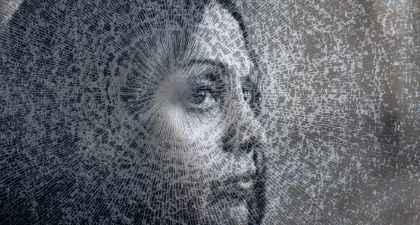Published on: June 21, 2021

PTSD Treatment in Tampa | Expert Therapists for Healing and Recovery | Find Support for Post-Traumatic Stress Disorder. Approximately 8 million Americans are affected by post-traumatic stress disorder (PTSD). Yet many struggling with PTSD symptoms may not even realize the source of their problem due to myths and misunderstandings about PTSD. Read on to learn the facts.
Although an estimated 30 percent of soldiers returning from war are diagnosed with PTSD, the condition can develop in anyone, including children. About 8 percent of the general population is estimated to have full-blown PTSD. An additional 5 to 15 percent may experience partial symptoms of PTSD. In addition, 10 percent of all women develop PTSD during their lifetime, more than twice the rate of men. Experiences that can cause PTSD to include:
In addition to these experiences, risk factors for PTSD include a family history of depression and anxiety, having a previous diagnosis of depression or anxiety, and substance abuse such as excessive drinking or drug use.
PTSD symptoms often arise within the first 3 months after a traumatic event. However, in many cases, it can take longer, even years, for symptoms to appear. Symptoms may also be episodic in nature, coming and going through the years. This is often the case with victims of childhood abuse. So much time may have passed since the original trauma that you may not associate your symptoms with what occurred in the past.
How can you tell if you have PTSD? Symptoms include recurrent distressing memories, dreams or flashbacks, and intense physical and emotional reactions to cues that represent the traumatic event.
You don’t need to have experienced trauma directly to develop symptoms of PTSD. You can be diagnosed with PTSD if exposed to actual or threatened death, serious injury, or sexual violence in one or more of the following ways:
It may seem a mystery why some people can get through major trauma with little help, while others struggle with persistent symptoms of PTSD. However, according to Harvard Medical School, 30 percent of PTSD cases are explained by genetics alone. That means certain individuals are more susceptible to developing PTSD.
So how does PTSD develop? When trauma occurs, the brain’s alarm system, or amygdala, triggers a fear response to make you react and to keep you safe. Normally, the brain’s prefrontal cortex helps regulate emotional responses triggered by the amygdala. But PTSD causes these two areas of the brain to malfunction. When this occurs, your brain is not able to distinguish safe events that are happening now from dangerous events that happened in the past. It’s not a matter of being weak; it’s simply a misfunction that occurs in the brain. For some people exposed to trauma, their brains get stuck in this pattern and they need help returning their brain function to a more normal pattern.
If you suffer from symptoms of PTSD, there are a variety of treatments to help cure this condition. Effective treatments for PTSD include both psychotherapy and pharmacotherapy.
Psychotherapeutic approaches for patients with PTSD include behavior therapy, cognitive therapy, hypnosis, and eye movement desensitization and reprocessing (EMDR). In addition to individual therapy, group therapy and family therapy can also be helpful. Group therapy lets participants share their traumatic experiences and receive support from other group members. Family therapy often helps sustain a marriage or partnership through periods of exacerbated symptoms.
Selective Serotonin Reuptake Inhibitors (SSRIs) such as sertraline (Zoloft) and paroxetine (Paxil) and Selective Serotonin Norepinephrine Reuptake Inhibitors (SNRIs) such as venlafaxine (Effexor) are prescribed to reduce PTSD symptoms and are considered first-line treatments. Other drugs shown to be effective include tricyclic drugs imipramine (Tofranil) and amitriptyline (Elavil). Classes of medications that are often used alongside SSRIs or SNRIs for adequate treatment of PTSD include benzodiazepines, mood stabilizers, hypnotics, and antipsychotics.
Because not everyone attains relief from established medications or therapy, researchers continue to study other possible treatment methods for PTSD. New approaches being studied include:
For more information about PTSD, visit our Mental Health Library page dedicated to PTSD and other trauma-related disorders. If you would like help from our mental health team for your PTSD symptoms, please submit an appointment request or call us at (800) 457-4573.
Discover the essence of Harmony United Psychiatric Care through our impactful numbers. Our experienced team is dedicated to fostering mental well-being.
10
+
Years of Experience
With 10 years of unwavering commitment to mental health, we bring a wealth of experience to support our patients on their journey.
About Us58
+
Providers
Our dedicated team comprises 58 skilled therapists', psychiatrists', psychologists', ensuring personalized and expert care for each individual.
Providers13
+
Locations
Across multiple locations, we extend our reach to provide accessible mental health care tailored to diverse communities.
Locations70000
+
Patients Served
Over 70000 patients have entrusted us with their mental well-being, experiencing compassionate care and positive outcomes.
Book AppointmentWelcome to the latest edition of “Discover Harmony,” the newsletter from Harmony United Psychiatric Care! In this edition, we bring you insights, updates, and valuable information to support your mental well-being journey.
Subscribe to newsletter